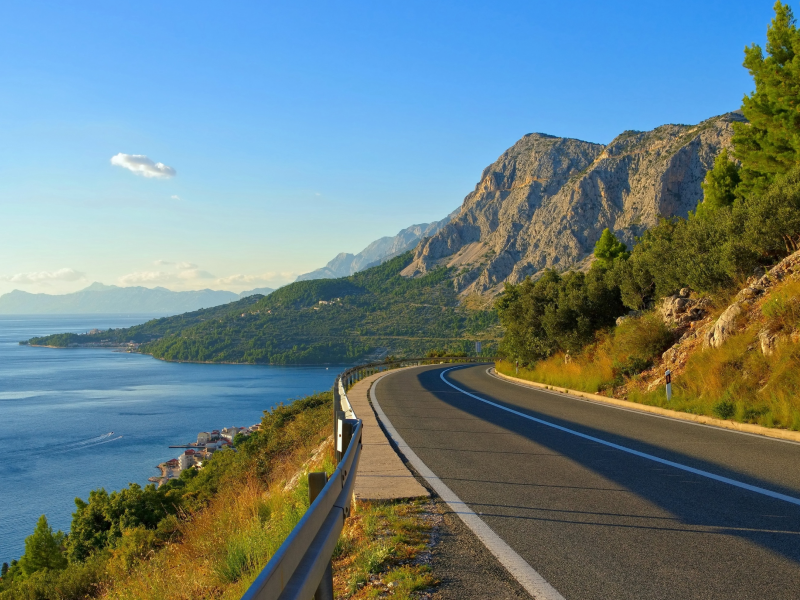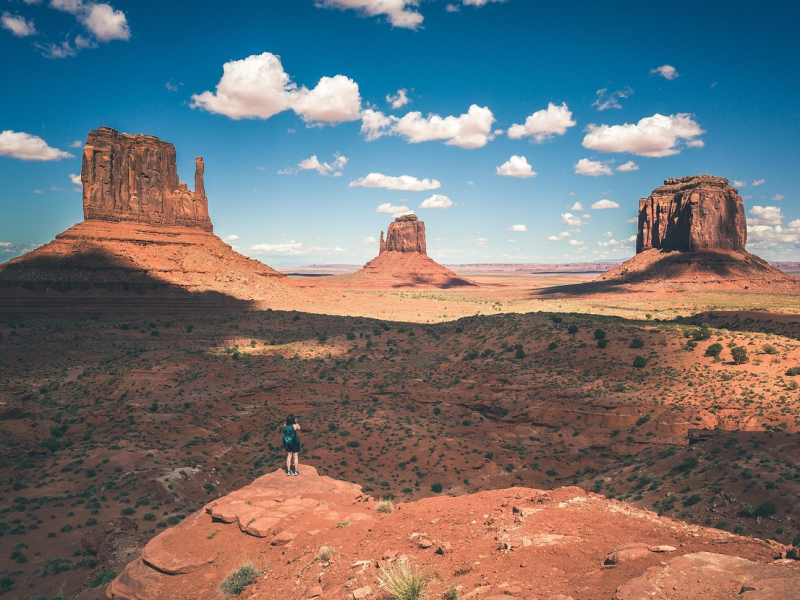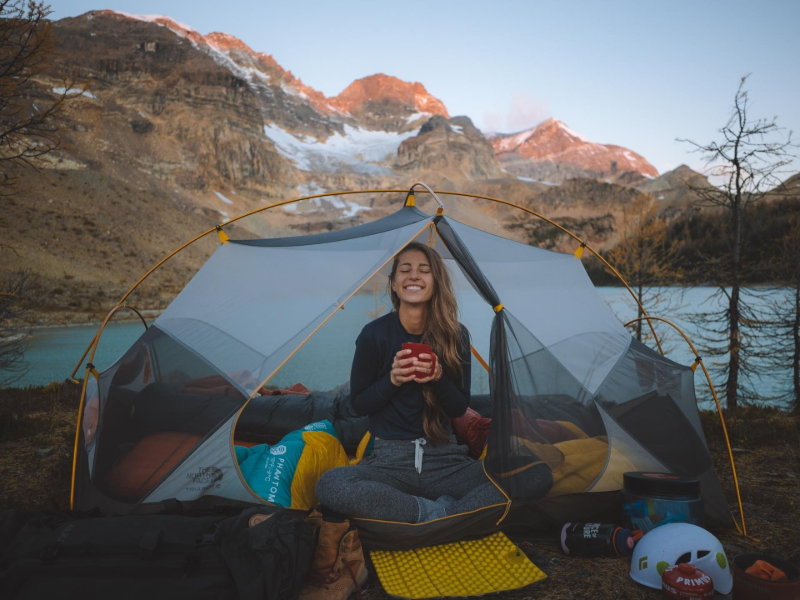
Camping solo offers a unique blend of independence, relaxation, and connection with nature. Whether you’re a first-timer or seasoned explorer, embarking on a solo camping trip can be a rejuvenating escape from daily routines. But solo camping also requires careful planning to ensure safety, comfort, and a good dose of fun. Here's a detailed guide to help you make the most out of your adventure, whether you're pitching a tent or rolling out in an RV.
Tent or RV? Choosing Your Solo Camping Style
As you prepare for your adventure, take a moment to consider whether tent camping or RV camping best fits your vision for the trip. Both offer distinctive experiences, complete with their own set of benefits and challenges, but the key lies in aligning your choice with your personal goals, comfort levels, and the kind of connection with nature you’re seeking. Let's explore the pros and cons of each to help you decide how to make your solo camping experience truly unforgettable.
Pros and Cons of Tent Camping
| Advantages | Disadvantages |
| Closer to Nature: Most tent campsites are nestled in natural terrain, offering unbeatable views and an immersive outdoor experience. | Weather Challenges: A rainy day or night can be uncomfortable without a good rainfly or waterproofing. |
| Affordable: Tent camping is budget-friendly, with regular sites costing around $35–$45/night. | Packing Takes Time: Getting back on the road involves dismantling your tent and gear, which requires effort. |
| Unplugged Experience: Spending an entire day outside, disconnected from tech and surrounded by fresh air, is a healthy and rejuvenating break. | Feels Vulnerable: With just a layer of nylon between you and the world, safety might be a concern for some. |
| Simplicity in Routine: Apart from cooking, eating, and washing dishes, there’s little else that requires your attention. |
Pros and Cons of RV Solo Camping
| Advantages | Disadvantages |
| Comforts of Home: RVs are self-contained, equipped with a bathroom, kitchenette, and other essentials for convenience. | Costly Stays: Dedicated RV sites with full hookups can cost anywhere from $30 to $100 per night. |
| Mobility: You can relocate to different landscapes or cities within minutes without much hassle. | Fuel Expenses: Even smaller RVs can consume significant amounts of gas, making long trips expensive. |
| All-Weather Friend: Rain or snow, your RV keeps you safe and dry. | Less Social: While RVers are friendly, they often retire early into their vehicles, limiting late-night social vibes. |
| Secure: You can lock your doors at night, making it feel safer than a tent. |
Types of Solo Tent Camping
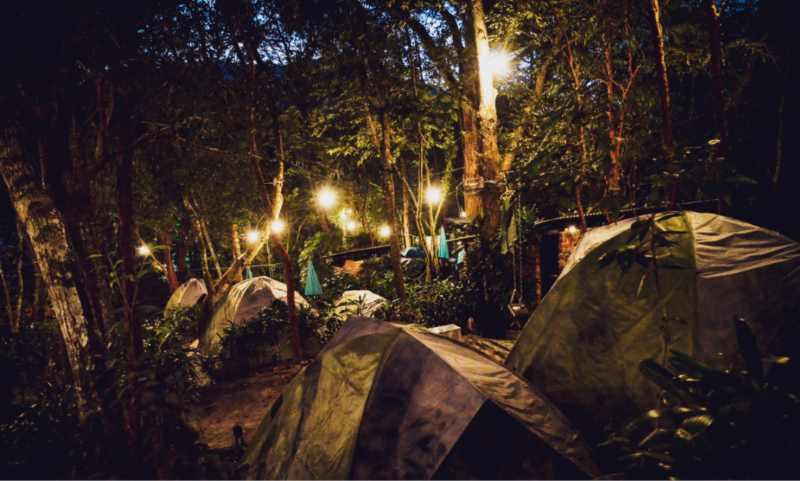
If you’ve decided that tent camping is your go-to style, the next step is to determine which type of tent camping experience suits your personal goals and comfort level. Here are three popular options, each offering a unique way to connect with nature and personalize your adventure:
1. Car Camping
Car camping is perfect for beginners or those who want the best of both worlds—proximity to nature and the convenience of being close to your vehicle. You can drive right up to your campsite, making it easy to bring along plenty of gear, food, and even a cozy chair to unwind in. This style is great if you want to pack a little extra—think a cooler for fresh food, backup gear, or even comfort items like your favorite pillow. For solo adventurers, car camping strikes a balance between isolation and ease, as many sites are nestled in scenic locations while still offering access to facilities like restrooms or potable water.
2. Backcountry Camping
For the adventurous spirit craving solitude and a deeper connection with the wild, backcountry camping (also known as interior camping) takes you far from the roads and crowds. This type of camping involves hiking, biking, or paddling to a remote site that promises true seclusion. It’s an unmatched way to experience untouched nature, from starlit skies to the quiet hum of the forest. However, it does require more advanced preparation—bringing lightweight gear, learning to filter water from natural sources, and mastering basic survival skills are essentials. If you yearn for a digital detox and complete immersion, this option is as raw and rewarding as it gets, though it may feel daunting for newcomers.
3. Camping on Private Land
For those seeking a unique twist, camping on private land offers a variety of settings that cater to different preferences. Platforms like HipCamp allow you to book campsites on privately-owned properties, ranging from secluded forests to open fields and cozy farm retreats. This type of camping is perfect if you want to avoid crowded campgrounds while still enjoying some modern amenities—many hosts provide firewood, potable water, or even pre-set tents. It’s also a great way to support local communities. Be sure to thoroughly read property descriptions and reviews before booking to ensure it aligns with the atmosphere you’re looking for.
These options demonstrate that tent camping is as flexible as it is fulfilling, allowing you to tailor your experience to your comfort level, skills, and desire for solitude or adventure. Next, we’ll dive deeper into the practical steps and tips for making each style of solo tent camping a memorable and safe one.
Staying Safe While Camping Alone
Camping alone is an empowering way to reconnect with nature and cherish time for yourself, but safety should always come first—especially for solo female adventurers . From careful planning to staying aware of your surroundings, the right preparation can turn potential worries into peace of mind. Whether it’s sharing your itinerary, packing essential tools, or knowing how to handle unexpected wildlife encounters, these practical safety tips will help you enjoy your solo adventure with confidence and ease.
10 Essential Solo Tent Camping Safety Tips
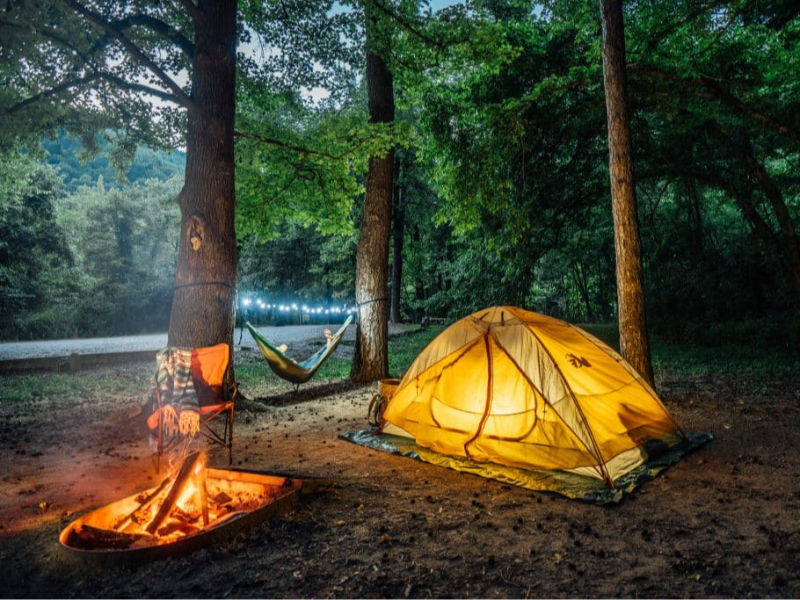
To make the most of your solo camping experience, prioritizing safety is crucial. These actionable tips will not only help you feel secure but also allow you to focus on enjoying the tranquility of the outdoors.
1.
Share Your Plan
: Always inform a trusted friend or family member about your camping itinerary, including your expected arrival and departure times, campsite location, and backup plans. This way, someone knows where to start looking in case of an emergency. Text them updates when possible, especially if plans change.
2.
Equip Yourself with a GPS Tracker
: Carry a GPS device like a Garmin inReach or a SPOT tracker, which not only helps you track your route but also allows you to send SOS alerts in emergencies. This is especially useful if you’re heading into areas with limited phone signal.
3.
Keep Your Valuables Safe
: Avoid leaving valuables like your wallet, phone, or keys lying around unattended. If you’re hiking or exploring, lock these items in your car or carry them in a secure, waterproof bag.
4.
Be Prepared with a First Aid Kit
: Invest in a portable first aid kit tailored to camping. Include items such as bandages, antiseptic wipes, blister pads, and any necessary medications you might require. It’s better to have it and not need it than be caught unprepared.
5.
Defend Against Bugs
: Protect yourself from insect bites by applying a repellent containing DEET or picaridin. Wear light-colored, long-sleeved clothing and tuck pants into socks to minimize tick exposure. Mosquito netting for your tent is also a great addition.
6.
Stay Hydrated Safely
: Hydration is vital, but untreated water can lead to illness. Always carry bottled water or a reliable filtration system—compact options like LifeStraw or Sawyer filters make purifying natural water sources easy and quick.
7.
Mind Your Food Storage
: Prevent unwanted nighttime visitors by storing food, trash, and scented items in airtight containers. If your campsite is in bear country, use bear-proof lockers or hang food bags from trees at least 12 feet above the ground.
8.
Beware of Carbon Monoxide Hazards
: Never light fuel-burning stoves, lanterns, or heaters inside your tent or enclosed areas. These emit harmful fumes that can be deadly in limited ventilation. Always use such equipment outdoors or in well-ventilated spaces.
9.
Enjoy Wildlife from Afar
: While spotting wildlife is an enchanting part of camping, it’s important to observe it responsibly. Keep a safe distance—at least 50 yards from larger animals like bears and moose, and avoid feeding them, as it puts both you and the animals at risk.
10.
Dress Smartly for the Elements
: Plan your clothing according to forecasted conditions. Wear breathable fabrics during the day, pack a wide-brim hat for sun protection, and layer up with warm, moisture-wicking clothes for chilly nights—temperatures often drop significantly after sunset.
By incorporating these precautions into your adventures, you can focus on the rewards of solo camping while staying prepared and protected. Next, we’ll explore more tips about the solo rv camping.
Tips for Solo RV Camping
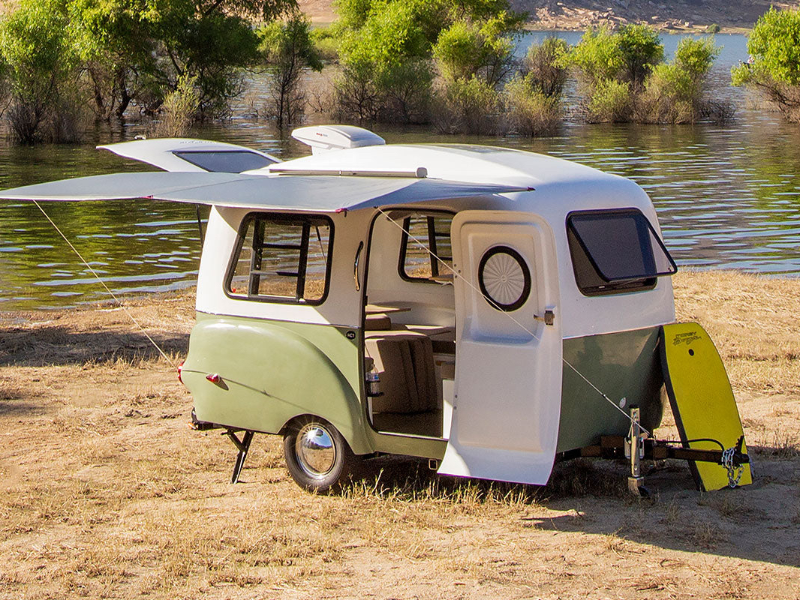
Solo RV camping offers a unique blend of adventure and comfort, allowing you to explore vast landscapes while keeping the convenience of home close at hand. Whether you're a seasoned traveler or a first-time RVer, these practical tips will help you stay safe and make the most of your road trip experience.
1.
Choose a Compact RV
: If you're traveling alone, opting for a smaller RV can make a world of difference. Compact models like Class B campervans or lightweight travel trailers are easier to handle, park, and fuel. They’re perfect for tight spaces and narrow roads, making the overall experience less stressful.
2.
Perform a Full Pre-Trip Inspection
: Before hitting the road, give your RV a thorough check. Test critical systems like the refrigerator and heater, ensure the tires are properly inflated and free from damage, and check fluids like oil and coolant. Keeping a maintenance checklist handy can prevent unpleasant surprises mid-journey.
3.
Leverage Helpful Apps
: RV-specific apps, such as RVlife Trip Wizard or Campendium, are your best friends. Use them to discover RV-friendly routes, locate campgrounds with desired amenities, and even identify dump stations. Many apps also provide real-time updates on road conditions and closures.
4.
Ensure Reliable Roadside Assistance
: Double-check that your roadside assistance plan extends to RVs. Services like AAA RV Plus or Good Sam Roadside Assistance have you covered for towing, tire changes, or lockouts—a vital safety net for solo travelers.
5.
Pack an Emergency Kit
: Stock up with essentials you might need on the road. Items like a heavy-duty flashlight, jumper cables, gloves, duct tape, and a basic toolkit can be lifesavers in unexpected situations. Don’t forget to include extra batteries and a portable power bank for your devices.
6.
Follow a Setup Checklist
: Setting up an RV can involve a lot of details—don’t rely on memory alone. Create a checklist that includes tasks like leveling your RV, securing the brakes, connecting water and electricity, or double-checking vents and windows before you move.
7.
Reach Your Campsite Before Sundown
: Arriving early gives you plenty of daylight to set up comfortably. It also reduces the risk of navigating unfamiliar campgrounds in the dark, avoiding potential hazards like low-hanging branches or tight parking spots.
8.
Prioritize Security
: Always lock your RV when you leave and keep keys in a secure place on your person. Motion sensor lights or a portable security alarm can add an extra layer of protection, especially in more remote spots.
9.
Plan Fuel Stops Wisely
: Save time and money by mapping affordable fuel stations along your route. Apps like GasBuddy can help—you’d be surprised how much the savings add up during a long-haul trip.
10.
Stay Connected with Others
: Even if you’re reveling in the solitude, it’s important to stay in touch. Share your travel plans and campsite location with at least two people, and keep them updated regularly. Handheld radios can also be useful in areas with no cell service.
By adopting these tips, solo RV camping can be a seamless and rewarding experience, providing the freedom to explore at your own pace while ensuring your safety and peace of mind.
Solo Camping as a Woman—Relaxation and Reflection
Camping solo as a woman often raises questions about safety, but for most solo campers, the rewards far outweigh the risks. Beyond safety, one of the biggest benefits is the chance to unwind and truly do “nothing.”
Here’s how I’ve found joy and calm on solo trips:
- Swimming with Wildlife : Spotting loons or listening to their haunting calls creates unforgettable moments of connection with nature.
- Disconnecting from Food Obligations : Grazing rather than eating formal meals feels freeing and allows you to focus more on your surroundings.
- Forecasting Weather : Setting up tarps or adapting your campsite in light of approaching storms builds both confidence and skills.
- Rediscovering Old Skills : Tying knots, lighting fires, and other rustic tasks remind you of simple, fulfilling accomplishments.
- Reading for Hours : Bring along a book by a favorite author and enjoy uninterrupted time to read and reflect.
Final Thoughts
Solo camping, whether by tent or RV, is more than a getaway—it’s an opportunity to reconnect with yourself and the natural world. Whether you’re seeking solitude, adventure, or a mix of both, camping solo offers a truly unique experience. Still unsure where to start? Focus on safety and preparation, and the rest will follow. From selecting the right gear to picking the perfect campsite, this guide has you covered. Take the plunge, pack your outdoor essentials, and create unforgettable solo memories under the stars.
You may also like these posts:

